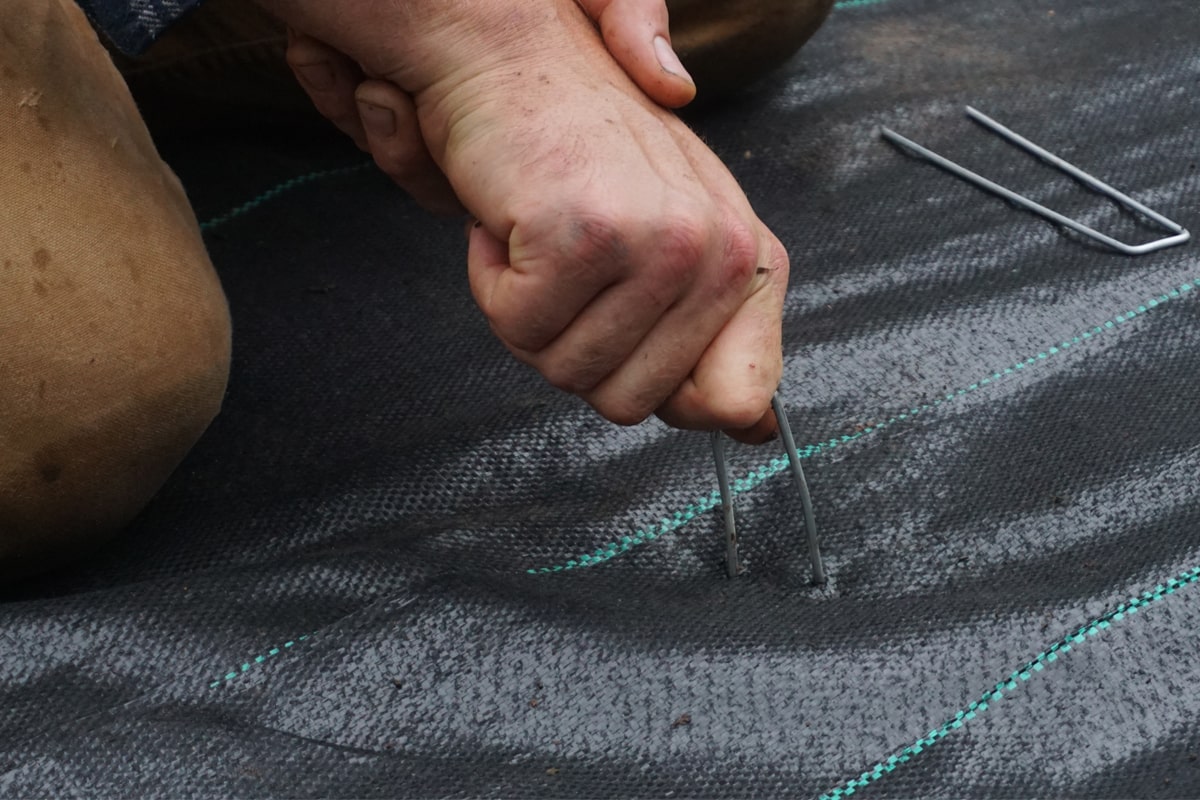Is your garden ridden with weeds that always seem to grow and multiply overnight? You've tried different solutions for getting rid of weeds, and still, pesky weeds keep coming back. The problem with weed overgrowth is that they're pests. They'll steal food from your plants, stifle fragile crops, and overtake any and all free space in your garden. Pulling weeds here and there is fine if you have a small garden, but if your outdoor space is large, you'll need a better solution to protect your plants from weeds.
One of the best ways to get rid of weeds is by installing landscape fabric. Landscape fabric is a cheap, easy, and quick solution for eliminating weeds in open spaces, like a vast garden. But before heading to our store and ordering landscape fabric, know that there are certain factors that you should consider before getting one. There are different types of landscape fabric, and it’s essential to know which one is best for your garden.
Contents []
What is a Landscape Fabric?
Landscape fabric is a solid sheet made with woven or non-woven materials with perforated holes that let the water soak through. It’s often sold in rolls. This product is used in different gardening and landscaping applications, including weed control.
To control weeds, landscape fabric is laid on the ground, working as a physical barrier between the soil and the sun. It effectively stifles the weeds by inhibiting sun exposure that's essential for photosynthesis. It also prevents weed seeds from getting sunlight so weeds won't multiply. By using landscape fabric, you can eliminate weeds without using herbicides.
Benefits of Using Landscape Fabric?
Slows down water evaporation: Apart from effectively killing weeds, landscape fabric is used to maintain soil moisture by delaying water evaporation. This is especially useful in the summer season when the soil is extra dry. Using landscape fabric to slow down water evaporation also means that you’ll water your plants less.
Prevents soil erosion: Acting as a physical barrier, landscape fabric also protects from soil erosion. If you live in an area that gets a lot of heavy rains and soil washout is an issue, you can use landscape fabric to prevent the soil from being washed away every time it rains.
Keeps mulch in place: Landscape fabric is often used beneath hardscaping. It’s installed around trees, shrubs, and bushes. It is also laid on top of gravel, rock, or hardscaping. Landscape fabric prevents inorganic mulch such as gravel and stones from sinking into the soil. Whatever non-organic mulching materials you used for your outdoor space, these will be well-protected by the landscape fabric.
Different Types of Landscape Fabrics
Woven Landscape Fabric
One of the most popular types of landscaping materials is woven polypropylene, a fiber tightly woven together to create a durable, permeable sheet. This landscaping fabric is ideal for weed control on large expanses of space and around trees and shrubs. The material features minuscule holes that allow water and nutrients to seep through the ground while also preventing weeds from growing and multiplying. Some woven landscaping fabric materials are treated to block UV rays to boost durability.

Non-Woven Landscape Fabric
Non-woven landscaping fabric is made from either polyester or polypropylene. Non-woven landscaping fabric is often used for large-scale hardscaping. It’s usually laid under stone pavers to keep gravel or rocks from sinking into the soil.
Because it’s non-woven, it is not as permeable compared to woven landscaping fabric. This means the soil won’t absorb water and nutrients.
Spun Landscape Fabric
This landscaping fabric is made from bonded polyester fibers. The fibers are bonded in layers to create a hardwearing landscaping fabric. It’s durable, thick, and resistant to tearing. Some spun landscaping fabric is thin enough for water and nutrients to seep through, but thick spun landscaping fabric isn’t as permeable. The thin type of spun landscaping is used for weed control in plots, flower beds, and beneath rocks. It’s also used to protect the garden from invasive grasses and pests.
Thick spun landscaping fabric, on the other hand, is too thick, so it is used for retaining wall applications, ward off roots and prevent seepage as well as for irrigation and drainage.

Perforated Landscape Fabric
Perforated landscape fabric is made from a lightweight material with precut holes or perforations to let plants through when laid on the ground. The holes won’t stifle the plants, making it easier to replace the landscape fabric. Of all types of landscaping fabrics, perforated landscape fabric is the one that’s often used for gardening.
You can use it to line vegetable gardens or flower beds. The fabric is easy to replace, so it’s a great one to use in places where plants are changed often.

Our landscape fabric is quite unique. It is made from a double layer of woven and nonwoven polypropylene. The ECOGardener premium landscaping fabric is designed for heavy-duty use. It's needle-punched to bond the layers and improve permeability. It combines all the benefits of woven, non-woven, and spun woven landscape fabrics. It also blocks light to ensure the ideal growing temperature and holds up well under direct sunlight.

When it comes to landscape fabrics, it’s essential to choose the right material. Choosing the cheapest product out there might not work because the product may not be designed for the application it is being used for. So by knowing what kinds of landscaping fabrics are ideal for different gardening and hardscaping purposes, you’ll make the best decision.



